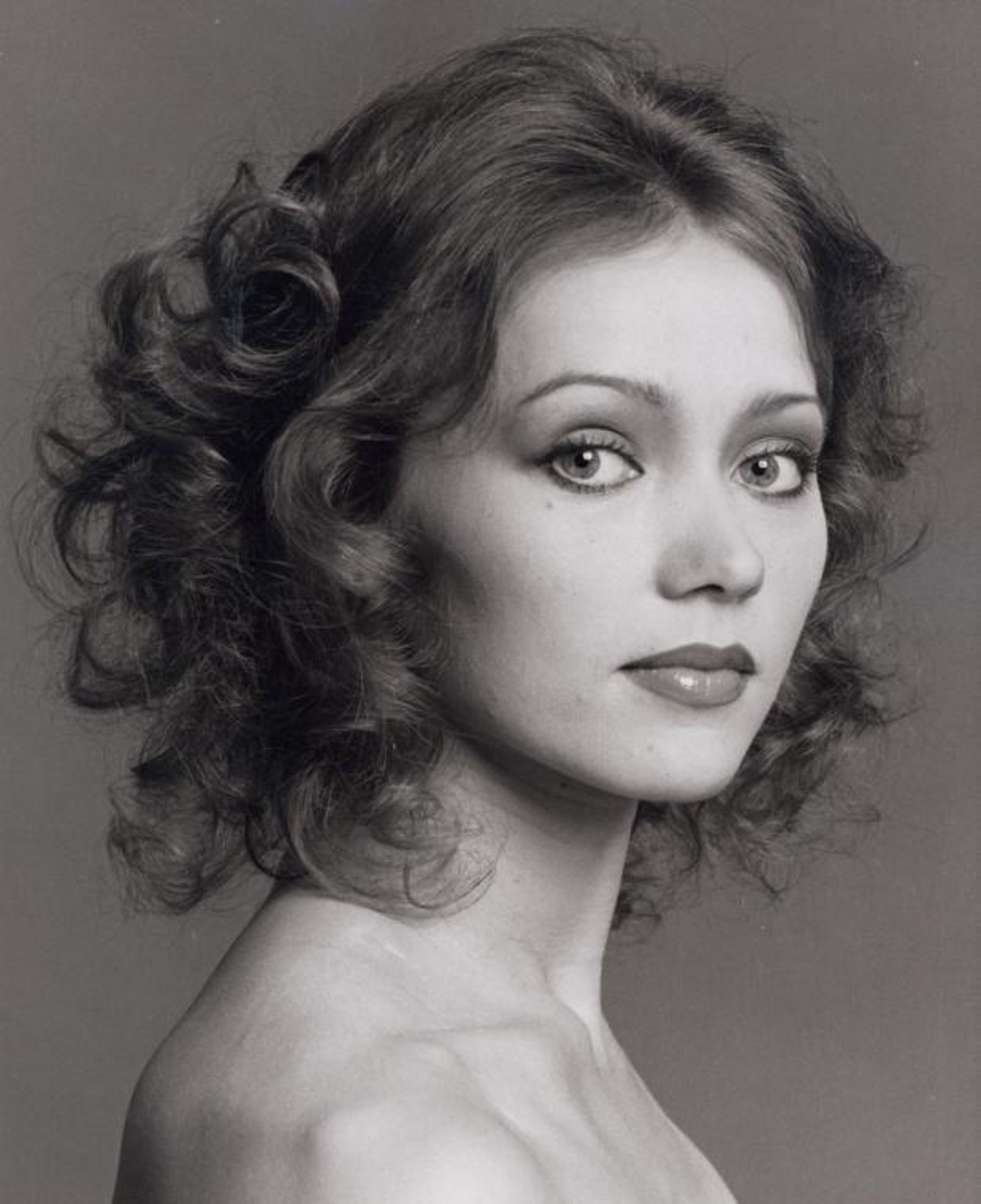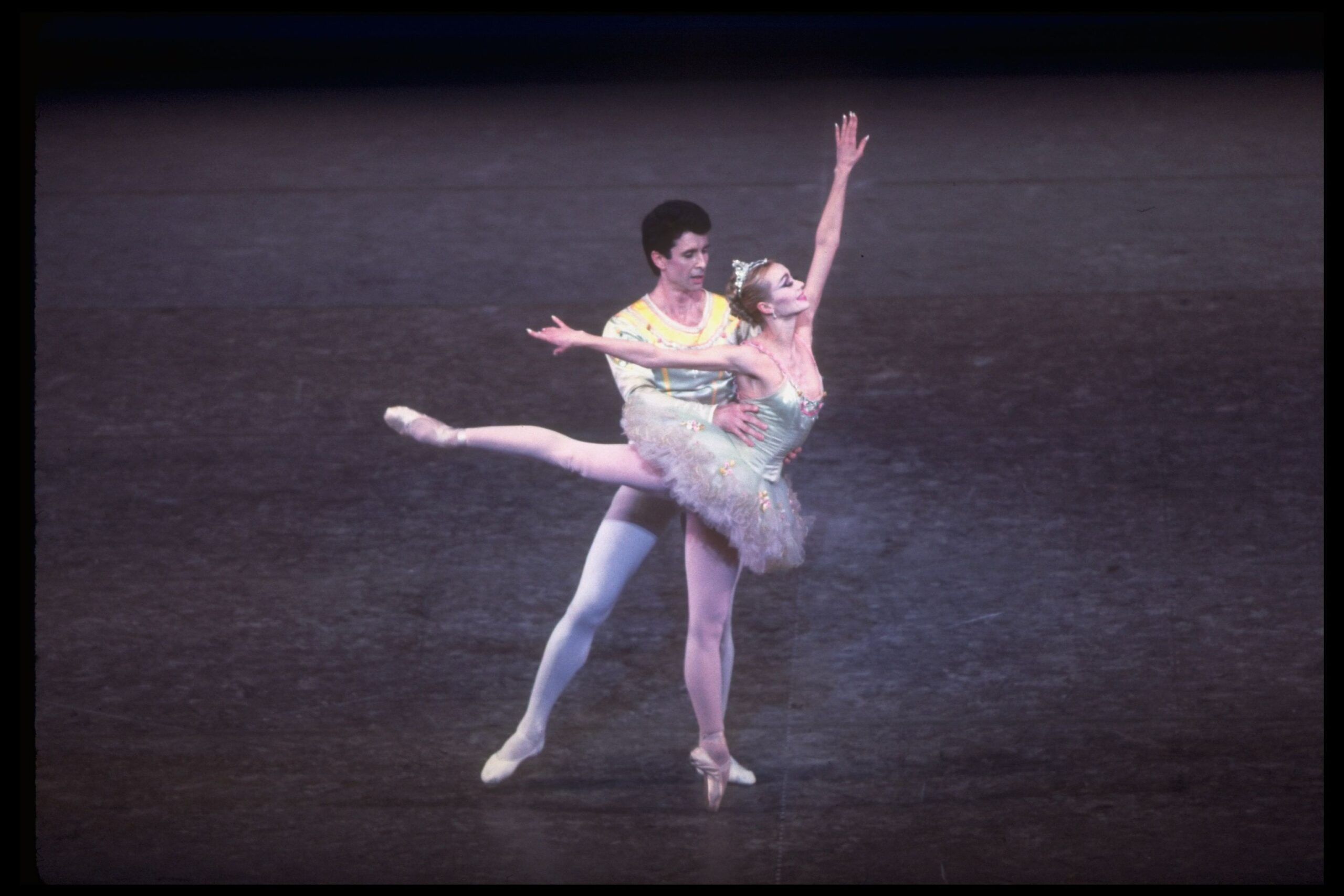Valentina Kozlova
Kenn Duncan, “Valentina Kozlova,” 1979. Billy Rose Theatre Division, The New York Public Library. “Valentina Kozlova” The New York Public Library Digital Collections. 1979. https://digitalcollections.nypl.org/items/23ce2060-c623-012f-f996-58d385a7bc34
Valentina Kozlova and Leonid Kozlov in “The Nutcracker”
Martha Swope, Valentina Kozlova and Leonid Kozlov, in a New York City Ballet production of “The Nutcracker” (New York), 1988. Billy Rose Theatre Division, The New York Public Library. “Valentina Kozlova and Leonid Kozlov, in a New York City Ballet production of “The Nutcracker” (New York)” The New York Public Library Digital Collections. 1988. https://digitalcollections.nypl.org/items/374155d0-b13b-0131-0432-58d385a7bbd0
Valentina Kozlova was born on August 26, 1957, in Moscow. She joined a children’s ballet company at the age of seven. Two years later, she applied for a spot at the prestigious Bolshoi Ballet Academy. This is one of the oldest and most challenging ballet schools in the world. Out of 30,000 applicants, Valentina placed first.
When Valentina turned 16, she was selected to dance in the Bolshoi Ballet company. The Bolshoi, which was founded in 1776, is one of the most famous ballet companies in the world.
Moscow is now the capital of Russia. Valentina grew up during the Cold War, when Russia was a republic of the communist-led Soviet Union. The Cold War was an era of hostility between the United States and the Soviet Union, which started after World War II. While the United States promoted capitalism and democracy, the Soviet Union believed communism was the answer and had authoritarian politics. Life under the strict communist regime meant that there was no freedom of speech or freedom of the press. The government spied on regular citizens and punished them harshly if they spoke out against the country’s leaders.
Valentina first traveled outside of the Soviet Union when the Bolshoi performed in Western Europe in 1973. It was a shock for her to see people happy. All her life, Valentina was told that the Soviet Union was the best country in the world and that citizens in capitalist countries lived miserable lives under government oppression. On this trip, she realized that was not true.
Later that same year, she visited the United States to perform with the Bolshoi. While in New York City during this trip, she got to know fellow Bolshoi dancer Leonid Kozlov. They fell in love and married two months later.
The cultural rivalry of the Cold War had inspired the Soviet Union to send Valentina and the Bolshoi Ballet to dance in the United States. Even ballet styles between the two countries were different. The Soviets focused more on technique, while the American ballet style favored expressive performances. By having the Bolshoi perform in the United States, the Soviet Union wanted to show off what they believed to be superior ballet dancers.
After dancing at the Bolshoi for two years, Valentina was promoted to principal dancer. She danced the lead roles in classic ballets like Swan Lake, Pinocchio, and Sleeping Beauty. However, Valentina felt like something was missing. At the Bolshoi, she could only dance classical ballets. During her trips outside the Soviet Union, she had seen Western ballet companies dance contemporary works, and she longed to do the same.
In 1979, the Bolshoi Ballet once again traveled internationally to perform in the United States. Valentina and Leonid appeared in Romeo and Juliet in Los Angeles on September 16, 1979. After the performance, they went missing backstage. The ballet company’s officials searched for them everywhere, but the Kozlovs were nowhere to be found.
The next evening, American government officials announced that Valentina and Leonid had defected from the Soviet Union. They had been granted political asylum in the United States.
Valentina and Leonid were not the first Bolshoi dancers to defect during this trip. On August 21, while the company was in New York, fellow dancer Alexander Godunov requested asylum in the United States.
“Walking on the streets of New York a few months after, a wonderful sense of freedom swept over me—a freedom you can breathe, a freedom you can taste in the air! Only those who have lived in Russia, or under a dictatorship, can understand that feeling of freedom.”
Leaving the Soviet Union had major implications for defectors. It would be too dangerous for them to return home, as they were likely to be imprisoned and could even be executed. This meant that they would never be able to see their friends and family again. There were no other ways to communicate with people in the Soviet Union either, as phone lines and mail were restricted and monitored. If defectors tried to contact their families back home, it could put their relatives in serious danger as the Soviet government surveilled its citizens.
On October 8, Valentina and Leonid first spoke publicly about their defection. After the performance, Valentina and Leonid had changed quickly into street clothes and snuck out an unguarded back door. They told the press that they had been thinking about living in the United States since their visit in 1973. As artists, they wanted to be free to dance different styles and be free from government surveillance. They could not have these freedoms under communist rule.
Valentina and Leonid became instant ballet celebrities. Ballet companies in New Orleans, New York, and New Jersey immediately booked the Kozlovs to perform. Vicente Nebrada, a well-known Venezuelan choreographer, created a special piece for the pair, For Valentina and Leonid.
Other dancers who had defected, like Alexander Godunov and the famous Mikhail Baryshnikov, quickly signed on to dance with major American companies. But the Kozlovs chose not to do so. Valentina and Leonid wanted to try everything, from small to large companies.
In 1980, Valentina danced the lead role in Anna Karenina with the Australian Ballet. She received rave reviews in the press. For Valentina, it was an exciting career opportunity because the part required dancing and acting in a dramatic fashion that would have been unacceptable at the Bolshoi. This type of fulfilling work confirmed for Valentina that leaving the Soviet Union was the right decision.
Valentina and Leonid took over the artistic direction for the Classic Ballet Company of New Jersey that same year. This small company only gave performances at certain times of the year. Valentina and Leonid led its production of The Nutcracker for the holiday season. She especially enjoyed working with the young dancers in the company.
Over the following years, Valentina danced in Australia, Israel, Mexico, and the United States. She made her Broadway debut in 1982 in the show On Your Toes.
Valentina joined the New York City Ballet as a principal dancer in 1983. She stayed with the company for 12 years. Valentina then started The Daring Project, her own ballet company, with choreographer Margo Sappington.
Valentina and Leonid divorced in 1985. In 1991, together they returned to Moscow for the first time since 1979. The Soviet Union invited a company of 40 dancers to perform dances by American choreographers. This was part of Soviet leader Mikhail Gorbachev’s policy of glasnost (meaning “openness”), which allowed for open discussion of political and social issues. For Valentina, it meant that she could finally see her family again. After the fall of the Soviet Union and the end of the Cold War shortly after, her mother was even able to visit her in New York.
In 2003, Valentina opened her own ballet school in New York City, the Valentina Kozlova Dance Conservatory. The school focuses on traditional ballet techniques. After judging ballet competitions for years, Valentina also launched her own ballet competition in 2011.
Valentina lives in New York City where she continues to teach ballet at her own school.
Vocabulary
- Cold War: A state of hostility between two nations that does not include open warfare. The most famous cold war was between the United States and the Soviet Union from 1945 to 1990.
- communism: A political system in which all goods and items of value are collectively owned and distributed to citizens equally.
- contemporary: A genre of dance first developed in the 1950s, which is more expressive than traditional ballet.
- defect: To leave your own country, political party, or other group, and join a rival.
- political asylum: A legal status of protection provided by a country to someone who has fled their home country for political reasons.
- principal: A dancer at the highest rank in a ballet company.
- Soviet Union: A nation that existed from 1922 to 1991. Officially known as the Union of Soviet Socialist Republics (USSR).
Discussion Questions
- What was life like for Valentina Kozlova in the Soviet Union? Why did she choose to defect?
- How did Valentina Kozlova’s career as a ballet dancer impact her decision to defect from the Soviet Union?
- What challenges might Valentina Kozlova have faced after choosing to live in the United States after defecting from the Soviet Union?
- How did both the Soviet Union and the United States use culture like ballet to highlight their superiority during the Cold War?
Suggested Activities
- Include this life story in a lesson about the Cold War.
- Watch archival footage of NBC News covering Valentina and Leonid’s return to Russia in 1991 here. What was the experience like for the couple? How did the American news portray their visit and life in the Soviet Union?
- To consider the impact of the Cold War on culture, pair this life story with the Kitchen Debate.
- Explore the impacts of foreign policy on women during this time period by teaching this life story alongside photographs of female hostages and the life story of Maria Connie Villescas.
Themes
AMERICAN CULTURE; AMERICAN IDENTITY AND CITIZENSHIP; AMERICA IN THE WORLD; IMMIGRATION; MIGRATION; SETTLEMENT









